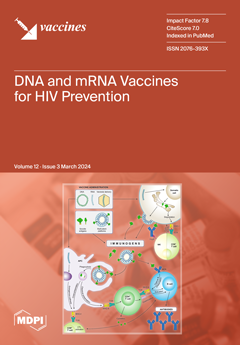Purpose: To determine the impact of booster COVID-19 vaccination on SARS-CoV-2 symptoms.
Background: The Omicron surge of infections provided an opportunity to evaluate symptoms in relation to booster receipt.
Methods: At a US medical college, the number, type, and duration of symptoms
[...] Read more.
Purpose: To determine the impact of booster COVID-19 vaccination on SARS-CoV-2 symptoms.
Background: The Omicron surge of infections provided an opportunity to evaluate symptoms in relation to booster receipt.
Methods: At a US medical college, the number, type, and duration of symptoms were evaluated for 476 students or employees, factoring in days between last vaccination and SARS-CoV-2 diagnosis.
Results: Compared with vaccinated non-boosted individuals, boosted individuals reported a significantly higher frequency of nasal congestion (57.9% vs. 44.4%,
p = 0.018) and nasal congestion and/or sore throat (77.2% vs. 62.0%,
p = 0.003); in contrast, the frequency of body/muscle aches was significantly less among boosted individuals (22.1% vs. 32.4%,
p = 0.038). With each one week increase in time since booster receipt, the probability of fever increased significantly by 4.4% (OR 1.044, 95% CI 1.01, 1.07,
p = 0.001), and the probability of cough increased significantly by 4.8% (OR 1.048, 95% CI 1.01, 10.8,
p= 0.010).
Conclusions: Within a medical college population, during the first 7 months of the Omicron surge of infections, compared with vaccinated non-boosted individuals, boosted individuals significantly more often reported the following: nasal congestion as well as nasal congestion and/or sore throat. In contrast, body/muscle aches were reported significantly less often. The rates of fever and cough each significantly increased as time since booster dose receipt increased. These data suggest that having had a booster vaccination, as well the timing of receiving it, impacts the clinical manifestations of breakthrough SARS-CoV-2 infections. Additional studies are needed to precisely define SARS-CoV-2 symptoms in relation to booster vaccinations.
Full article






